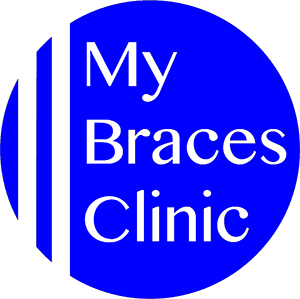
Traditional dental braces are often the first option that comes to mind when you’re considering straightening your teeth. In recent years, however, the use of clear aligners, also known as invisalign, has grown in popularity. It is another orthodontic device used to adjust teeth alignment without the use of metal braces. There are many advantages to wearing an invisalign instead of braces. Unfortunately, several misconceptions and myths surrounding Invisalign have pushed people away from using them. In order to help you make an informed decision about the orthodontic tool that will suit your needs best, we clarify these misconceptions and debunk some myths about Invisalign.
Misconception 1: Invisalign is not for children
Invisalign is an excellent orthodontic tool for both adults and children. In fact, there are specially designed Invisalign for kids, called Invisalign first, that can treat simple to complex teeth alignment problems in growing children. Compared to traditional braces, Invisalign is a preferred method for children because it does not require your child to sit for long periods of time in a dentist’s office or make frequent trips to the dental clinic to adjust or change wires—which has to be done once or twice a month.

Additionally, Invisalign for kids can help develop their jaws to make room for permanent teeth, prevent worsening pre-existing bite issues, fix existing teeth alignment issues, and correct oral habits such as thumb sucking.
Misconception 2: The teeth will become misaligned again after removing invisalign
Some teeth movement is natural; whether you’re wearing braces or Invisalign, retainers are necessary to maintain the alignment of your teeth. Otherwise, your teeth will start to shift back to their old positions after you stop wearing Invisalign. Invisalign treatment usually softens the jawbone or goes through resorption and takes around 9 to 12 months to build up enough bone to stabilise your teeth. As the bone strengthens, you can gradually stop relying on the retainers to keep your teeth in position.
Learn More: Long-term Health Benefits of Having Straight Teeth
Misconception 3: Invisalign is not as effective as braces
Invisalign treatment typically takes 12 to 18 months to complete, which is faster than traditional braces that usually take about two years. However, the duration of treatment depends on the severity of teeth misalignment. More complex issues may require longer treatment periods. Nonetheless, Invisalign can achieve results comparable to traditional braces.
Misconception 4: Some foods cannot be eaten with invisalign on
Invisalign offers the advantage of not having to avoid certain foods to protect the shape and condition of your trays. While it is recommended to avoid overly hot or hard food, you don’t have to eliminate them completely from your diet because Invisalign can be easily removed when you want to eat.
Misconception 5: Invisalign is extremely expensive
Although this orthodontic treatment does not come cheap, invisalign costs in Singapore are not significantly higher than braces. For a similar rate, you get to fix your dental imperfection without having to wear visible wired or ceramic braces on your teeth, and you can still enjoy your favourite foods.

Considering getting an invisalign to straighten your teeth? Look no further than MyBracesClinic, a dental clinic in Singapore with a dedicated team of orthodontists. Whether it’s Invisalign for kids, students or adults, we can help you fix various teeth alignment issues to achieve a more confident smile. Find the orthodontic solution you need with us.




